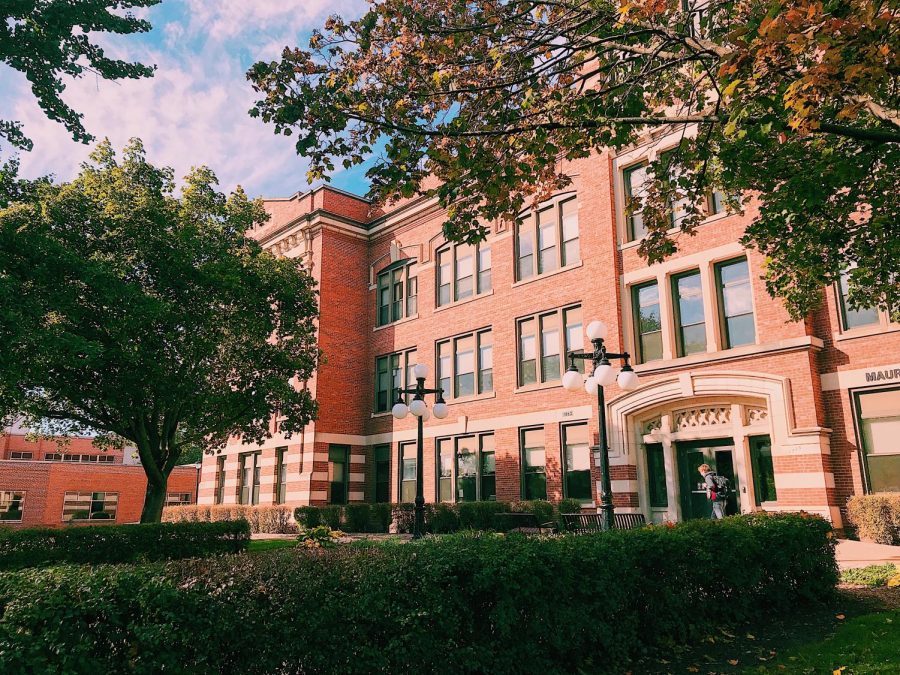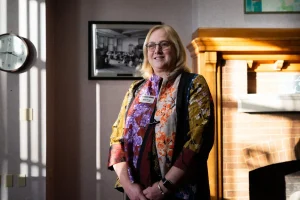Explained: UWL segregated fees and funding for fall 2020 semester
Graff Main Hall.
September 20, 2020
In light of the financial stress that the COVID-19 pandemic has put the University of Wisconsin-La Crosse and the entire UW System under, many students are wondering whether this is reflected in their tuition. The Racquet Press reached out to a student representative from the Segregated University Fee Allocation Committee (SUFAC) to learn more about what UWL’s budget looks like for this year.
K.C. Cayo is a junior at UWL double majoring in political science and English with an emphasis on writing and rhetoric and minoring in social justice studies. Cayo is also in their third year in the Student Assocation and third year on SUFAC and formerly served as the chair of the Academic Initiatives Differential Allocation Committee (AIDAC).
Cayo described the role that SUFAC and AIDAC have on campus, and how COVID-19 has impacted funding. “The job of SUFAC is to make decisions regarding the manner in which segregated university fees are allocated and distributed to different entities that get their funding through SUFAC,” Cayo said. “Those are entities like the Child Care Center, Student Health, Athletics, The Rec, Counseling and Testing, and then some committees like the Student Organizations Committee.”
SUFAC is a combination of students, faculty, and administrative staff, but only students and faculty are voting members. SUFAC’s main duties include hearing presentations on how entities plan to use their funding throughout the year, and then passing those appeals and sending them to Student Association to be approved.
Cayo says that it’s important to make a distinction between allocable and non-allocable services. “We can only make cuts to allocable services, not non-allocable services because those budgets are set for long term financial obligations the university has.”
Examples of non-allocable services include the Child Care Center, University Centers, Counseling and Testing, and Student Health. Allocable services, on the other hand, are there to support student activities, which fluctuate greatly year to year. Examples of these services are student organizations, programs, events, recreational activities, athletics, etc. Segregated fees can be identified if you go to your CashNet account through Wings, look at any of your statements, and search for the charges labeled “Seg Fee.”
Cayo then explained AIDAC’s role on campus. “AIDAC gives a student voice in the allocation of differential tuition. These are programs that coincide with the four fundamental pillars of UWL, which are built on the foundation of student needs and are advising, diversity, internationalization, and research,” they said. “Those are entities like the Advising Center, Murphy Library, Graduate and Undergraduate Research, Study Abroad programs, and Campus Climate.” AIDAC fees are labeled “Acad Initiatives Diff Tuit UG” in CashNet statements.
Cayo anticipates several changes in how AIDAC and SUFAC will function this year due to COVID-19. Cayo said, “If a committee doesn’t use their money by the end of the year it comes back to us and they can request it back, or it just goes back to SUFAC’s reserve.”
SUFAC is required to maintain a 10 percent reserve, which helps regulate student fees and make sure fees don’t rise. “When we approve budgets at the beginning of the year, the expectation is that they’ll use all of it,” Cayo said. “But last semester, we had a lot of money that came rolling back because a lot of events were canceled due to everyone going home in March.”
Though this could be a good thing, COVID-19 can still effect fees. Cayo said the feasibility of entities being able to use all those funds when we yet again have no in-person events seems low. “There are definitely more factors to consider. When entities present their budget plans, we will have to be a lot stricter about how they’re are using their budgets—especially now that there’s a travel freeze. For athletics especially, that’s usually a big chunk of their budget and now they’ll have to find another way to use that.”
When The Racquet Press compared the costs of segregated fees from fall 2019 to fall 2020, they fluctuated slightly but remained around the same. Because of the UW System tuition freeze that has been in place since 2013, and this freeze being renewed for another two years in spring 2019, UWL tuition should not be making any drastic leaps in the near future. This doesn’t mean that segregated fees will not go up, as they have been very slowly but steadily increasing every year.
AIDAC fees have stayed constant from last fall to this fall, but Cayo said that may not stay constant for long. They said that AIDAC was forced to make cuts of up to ten thousand dollars last semester, as a result of COVID-19. This year, those cuts will likely continue. “There’s a good chance there will be cuts this year, since La Crosse is losing about four billion dollars,” Cayo said.
In addition to monetary losses as a result of COVID-19, UWL has also undergone several large-scale construction projects. The renovation of Wittich Hall was recently completed, Badger Street was repaved as a walkway this summer, and work on the new fieldhouse building was started this summer as well. Though some students are concerned about the practicality of continuing with these projects considering COVID-19, Cayo says that the budgets for these projects likely did not come from UWL students’ tuition and should not drive tuition up, since they are projects that have been in the planner for several years already. “It’s very likely that those projects were funded by the gubernatorial budget or by the UW system itself.”
Though the long-term fiscal effects of COVID-19 have yet to be felt, students can expect their overall tuition and fees to stay in the same ballpark for the foreseeable future. As for budget cuts, many of those administrative decisions are yet to be made and announced. For more in-depth information and projected numbers, readers can go to https://www.uwlax.edu/admin-finance/.






